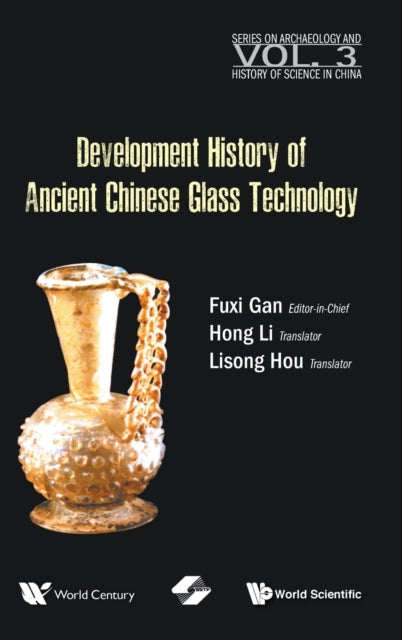Shulph Ink
Development History Of Ancient Chinese Glass Technology
Development History Of Ancient Chinese Glass Technology
YOU SAVE £19.35
- Condition: Brand new
- UK Delivery times: Usually arrives within 2 - 3 working days
- UK Shipping: Fee starts at £2.39. Subject to product weight & dimension
Bulk ordering. Want 15 or more copies? Get a personalised quote and bigger discounts. Learn more about bulk orders.
Couldn't load pickup availability
- More about Development History Of Ancient Chinese Glass Technology
Ancient glass research began in the early 20th century, with the consensus that the first manmade glasses originated in the Middle East during the 5000–3000 BC. However, recent findings demonstrate that China had already developed its glassmaking technology at least since 200 BC. There are two schools of viewpoint on the origin of ancient Chinese glass: one believes it originated from the import of glassmaking technology from the West, while the other scientifically demonstrates that homemade ancient Chinese glass with unique domestic formula containing both PbO and BaO was made as early as in the Pre-Qin Period or even the Warring State Period. This English version of a Chinese book provides detailed information on the development, imports, and influence of ancient Chinese glass and foreign glass products along the Silk Road(s).
\n Format: Hardback
\n Length: 820 pages
\n Publication date: 15 January 2021
\n Publisher: World Scientific Publishing Co Pte Ltd
\n
Worldwide research on ancient glass began in the early 20th century, with a consensus among archaeologists that the first manmade or synthetic glasses originated in the Middle East during the 5000–3000 BCE period. In contrast, ancient China had well-developed manufacturing technology for pottery and ceramics, with the earliest pottery and ceramics dating back to the Shang Dynasty and Zhou Dynasty (1700–770 BCE). However, the earliest ancient glass artifacts discovered in China date back to the Western Han Dynasty. Recent findings using advanced analytical and spectroscopic methods have shown that China had developed its glassmaking technology as early as 200 BCE.
There are two schools of thought regarding the origin of ancient Chinese glass. The more common viewpoint suggests that ancient Chinese glass originated from the import of glassmaking technology from the West during the Sino-West trade exchanges in the Western Han Dynasty (206 BCE–25 AD). On the other hand, scientific evidence demonstrates that homemade ancient Chinese glass with unique domestic formulas containing both PbO and BaO was made as early as in the Pre-Qin Period or even the Warring State Period (770 BCE–221 BCE), known as Youhsa or Faience.
This English version of the previously published Chinese book, "History of Ancient Chinese Glass Technology Development," is intended for universities and research institutes engaged in various research and educational activities related to ancient glass and history. With 18 chapters, the book provides detailed information on scientifically based findings regarding ancient Chinese glass development, imports, and influences of foreign glass products, as well as the influence of foreign cultures on ancient Chinese glassmaking.
\n Weight: 1316g\n
Dimension: 158 x 236 x 51 (mm)\n
ISBN-13: 9789811229763\n \n
This item can be found in:
UK and International shipping information
UK and International shipping information
UK Delivery and returns information:
- Delivery within 2 - 3 days when ordering in the UK.
- Shipping fee for UK customers from £2.39. Fully tracked shipping service available.
- Returns policy: Return within 30 days of receipt for full refund.
International deliveries:
Shulph Ink now ships to Australia, Belgium, Canada, France, Germany, Ireland, Italy, India, Luxembourg Saudi Arabia, Singapore, Spain, Netherlands, New Zealand, United Arab Emirates, United States of America.
- Delivery times: within 5 - 10 days for international orders.
- Shipping fee: charges vary for overseas orders. Only tracked services are available for most international orders. Some countries have untracked shipping options.
- Customs charges: If ordering to addresses outside the United Kingdom, you may or may not incur additional customs and duties fees during local delivery.


